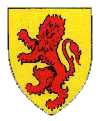The Leathlobhair Clan
The Leathlobhair Clan Association was formed in 1993 as a result of much interest expressed after the last national homecoming festival in Ireland. The forming of the clan was supported by Laois Tourism. The Lalors were of the Cruithen people who lived on both sides of the Irish Sea between Ulster and what is now Scotland. Their territory was known as Dal nAriade. Among the kings of Dal nAriade was one Leathlobhair, who died in 707 AD. They were invited to Leix by the O'Moore's, princes of ancient Leix, married into the O'Moores, and settled near the Rock of Dunamaise. The Leathlobhair Clan is registered with the Clans of Ireland. Its aims are:
|
|
A brief history
This name in modern times is spelt in three
different ways: Lawlor, Lalor, and Lawler, the first of these being slightly
more numerous than the others. In Irish it is Leathlobhair, which would appear
to denote a descendent of the "half-leper" or "battle-scarred
one". The prefix "", it may be noted, which was discarded during
the period of Gaelic submergence, has not been resumed in modern times. The
O'Lalors, like their kinsmen the O'Mores, were one of the Seven Septs of Leix
(O'Lalors, O'Moores, O'Dowlings, O'Dorans, O'Devoys, O'Kellys, and McEvoys).
They were located near the famous Rock of Dunamase in Co. Laois, but were
driven from this territory by the English invaders under Queen Elizabeth I. The
scene of the making of the treaty, as a result of which the leading men of the
Seven Septs were transplanted to Co. Kerry in 1609, is still called Lalor's
Mills.
The peasants and workers of the
O'Lalor sept remained in their old territory, a fact which is borne out by the
prevalence of the name there today: nearly all the Lalors, Lawlors, and Lawlers
in Ireland are to be found in Leinster, either in Laois or in the counties
lying to the east of it. The name of one Harry Lalor is traditionally preserved
as the hero of the massacre of Mullaghmast in 1577 in which many innocent and
unsuspecting Lalors, O'Mores, and other inhabitants of Laois were treacherously
done to death by the O'Dempseys in conjunction with the English planters of the
district.
Clan Chieftains of Recent Times:
- 1994-1995 Paddy Lalor, M.E.P.,
Abbeyleix.
- 1995-1997 Mary Lalor, The Heath.
- 1997-1998 Michael Lalor, County
Councillor, Camross.
- 1998-1999 Paddy Lalor, Kilkenny
and Dublin.
- 1999-2000 Kevin Lalor-Fitzpatrick,
Tenakill, Raheen.
- 2000-2001 Marion Lalor Gunn,
Dublin.
- 2001-2002 John Lalor, Ballyroan.
- 2002-2003 John Eldon, Dublin.
- 2003-2004 David Lalor, Killeigh.
- 2004-2005 Carole Lalor Millard,
Abbeyleix.
- 2005-2006 Marion Lalor Gunn,
Dublin.
Bill Geoghegan, Mountmellick,
is Official Piper to the Leathlobhair.
|
HTML by EGTeo 2005-7-14 |

